AVC-X3800H vs VSX-LX305
With the Denon AVC-X3800H and the Pioneer VSX-LX305, we send two direct competitors into the race and see which of the two A/V receivers has the edge or whether there is a clear winner at the end of the day? With the AVC-X3800H, Denon presents a fully equipped A/V receiver with 9 channels and 4 subwoofer outputs. Pioneer has also splashed out and presents its 9-channel A/V receiver with 2 subwoofer outputs and many features.
The check on the data sheet
| Denon AVC-X3800H | Pioneer VSX-LX305 Elite | |
| Power Supplies | 660 watts, | 750 watts, |
| Amplify channels | 9 | 9 |
| Processing (preamp) channels | 11.4 | 9.2 |
| subwoofer outputs | 4 | 2 |
| sound format | Dolby Atmos, DTS:X, IMAX Enhanced, Auro-3D | Dolby Atmos, DTS:X, IMAX Enhanced |
| Output power (8 ohms, 20 Hz - 20 kHz, 2-channel operation) according to the data sheet | 105 watts, | 100 watts, |
| Output power (6 ohms, 1 kHz, 1-channel operation) according to the data sheet | 180 watts, | 225 watts, |
| HDMI inputs / HDMI outputs | 6 / 3 | 6(+1 front) / 2 |
| HDMI 2.1 with HDCP 2.3, HLG, HDR10+, Dolby Vision | Ja | Ja |
| Color | Black | Black or Silver |
| calibration system | Audyssey + Dirac Live Paid ($259 Limited or $349 Full Band) | Advanced MCACC + Dirac Live (Free) |
| Dimensions (WxDxH) | 434 x 389 x 167 | 435 x 370.5 x 173 mm |
| Weight | 12.5 kg | 13.5 kg |
| Price (RRP) | 1699, - EUR | 1399, - EUR |
The front


The front of both devices is equally tidy. We like the symmetry a bit better on the Pioneer with the two equally sized knobs, but that's more a matter of taste than a real difference. On the other hand, the Pioneer actually scores with the variety of connections in the front compared to the Denon. In addition to the USB input, the Denon also offers a headphone connection and a connection for the microphone for measuring the sound system. The Pioneer VSX-LX305 is also equipped with a 3,5mm jack AUX input and HDMI input. For many, probably not a war decision. However, if you want to quickly connect your laptop, camera or smartphone via HDMI, it is definitely easier with the Pioneer. For many, probably not the decisive factor. But if you want to quickly connect a laptop, camera or smartphone via HDMI, it is definitely easier with the Pioneer. Otherwise, both devices offer approximately the same ease of use within the front panel. The display doesn't really change much either, apart from the color. If we had to give a first place here, it would go to Pioneer. But we are realistic and award a draw here. Because hardly anyone would make a purchase decision just because of the front, right?
DRAW | Denon 0 - Pioneer 0
The backside


It might look different on the back. In terms of connectivity and variety, Denon is ahead of the game here, if not in all points. In principle, many should not care about the complete variety of connections, even in quotation marks, as long as the appropriate HDMI inputs are available. After all, both devices still offer sufficient analogue inputs, even if the Denon has two more. With the digital audio inputs, Pioneer offers one digital and one coaxial input each, Denon plays it safe with two each. We generally think that's clever. We also find it an advantage that we can completely unscrew the WLAN antennas on the Denon model. However, the Pioneer has one plus point for itself: It not only offers a 12V trigger output like the Denon, but two. Also, the Denon offers us only one USB port on the front. With the Pioneer, we can also connect our hard drive with the songs at the back. That makes sense, of course, if you have a hard drive permanently attached, for example. Whether and how many connections are required is an individual decision.
POINT DENON | Denon 1 - Pioneer 0
Room Correction Technology

Both manufacturers rely on their own room correction technology, which is not perfect for either. Denon relies on the Audyssey MultEQ XT3800 for the AVC-X32H and Pioneer on the well-known Advanced MCACC. The appropriate microphone is supplied with both A/V receivers. The Pioneer VSX-LX305 makes the big difference here, because it is also delivered with a completely free Dirac Live version. The customer can also carry out a complete Dirac Live calibration with the originally supplied microphone in connection with his smartphone and the Pioneer Remote App. With the Denon, Dirac Live can also be used if desired, but this license must be purchased separately from the Dirac Store. The price for the full bandwidth version, which we also recommend, is 323,60 euros. With Pioneer, this version is already included free of charge when purchasing the device. With Denon, the supplied microphone cannot be used for the Dirac Live calibration; a separate microphone must be purchased. We also recommend this step for Pioneer. With both devices, the Dirac Live measurement with the appropriate microphone, for example from miniDSP UMIK-1, brings a significantly better result. With Pioneer, the question does not really arise as to whether Advanced MCACC or Dirac is used, since Dirac simply offers significant added value without additional costs. With Denon, it's more of an individual decision whether Dirac Live room correction technology is worth something or not. We would recommend them.
For us, this point clearly goes to Pioneer. Since this is a not inconsiderable cost factor and the manufacturer already supplies all devices with Dirac Live and the in-house Advanced MCACC room correction technology.
POINT PIONEERS | Denon 1 - Pioneer 1
sound formats
The two models from the manufacturers do not differ significantly in terms of the sound formats. Except that the Denon AVC-X3800H also supports Auro-3D in addition to Dolby Atmos, DTS:X and IMAX Enhanced. The Auro-3D sound format is completely missing from the Pioneer. But this is only important if you want to set up an Auro-3D setup. For one or the other this is manageable, for the other it is an essential point. In this case, the audio format goes to Denon.
| sound formats | Denon AVC-X3800 | Pioneer VSX-LX305 Elite |
|---|---|---|
| Dolby Atmos | ✅ | ✅ |
| Dolby Atmos Height Virtualization | ✅ | ✅ |
| Dolby Surround | ✅ | ✅ |
| DTS Virtual: X | ✅ | ✅ |
| Multichannel Stereo | ✅ | ✅ |
| DTS: X | ✅ | ✅ |
| DTS:X Pro | ❌ | ❌ |
| IMAX Enhanced | ✅ | ✅ |
| Auro 3D | ✅ | ❌ |
| 360 Reality Audio / MPEG H | ✅ | ❌ |

Virtualization Technology generates loudspeakers even without a height
the impression of overhead sound
POINT Denons | Denon 2 - Pioneer 1
Streaming
Both the Pioneer VSX-LX305 and the Denon AVC-X3800H rely on a variety of streaming services, voice control and multi-room options. We have clearly summarized all the differences and available services in a table.
| streaming services | Denon AVC-X3800 | Pioneer VSX-LX305 Elite |
|---|---|---|
| Spotify Connect | ✅ | ✅ |
| TIDAL | ✅ | ✅ |
| Amazon Music | ✅ | ✅ |
| Deezer | ✅ | ✅ |
| tune in | ✅ | ✅ |
| Roon Tested | ✅ | ✅ |
| Hi-Res audio | ✅ | ✅ |
| Bluetooth | ✅ | ✅ |
| Voice control | Denon AVC-X3800 | Pioneer VSX-LX305 Elite |
|---|---|---|
| Amazon Alexa | ✅ | ✅ |
| Apple Siri | ✅ | ✅ |
| Google voice assistant | ✅ | ✅ |
| Multiroom | Denon AVC-X3800 | Pioneer VSX-LX305 Elite |
|---|---|---|
| HEOS Multiroom | ✅ | ❌ |
| DTS PlayFi | ❌ | ✅ |
| AirPlay 2 | ✅ | ✅ |
| Chromecast built-in | ❌ | ✅ |
| Alexa Multiroom | ❌ | ✅ |
| Works with SONOS | ❌ | ✅ |
There is good agreement between the two manufacturers when it comes to streaming services. When it comes to multiroom, it is noticeable that Denon tends to focus on its in-house multiroom platform HEOS. Pioneer is more open with significantly more options, but this is probably also due to the fact that Pioneer itself does not have its own multi-room platform. In general, of course, we prefer an open approach. Because not only we, but also the end customer can decide for himself which platform is the right one for him. At Pioneer, we think the collaboration with Sonos is particularly great. After all, Denon now also offers a large product portfolio with its HEOS platform, but you are and will remain in the Denon & Marantz universe. The point goes to Pioneer in this case
POINT Pioneers | Denon 2 - Pioneer 2
The sound
Let's get to the most important topic: the sound. The technical data does not play a role here, but rather the impression, the spatiality and, above all, the dynamics. For our test we use three different 3D sound setups. A 5.2.4 setup from the DALI Oberon series with two SVS subwoofers, a 5.2.4 setup in combination with built-in speakers from James Loudspeakers (front + center) and Sonance speakers for the ceiling and surround sound, and a Monitor Audio Silver setup. This not only shows one speaker type, but it can be checked with three different setups how the respective A/V receivers behave. Finally, we let both devices compete against each other in our stereo comparison with different loudspeakers from quadral, KEF & DALI. With almost the same performance, nuances will decide here, or is there a big difference in sound? Both systems were calibrated using the room correction technology supplied free of charge. Denon competes with Audyssey MultEQ XT32, Pioneer with Dirac Live. Neither system used a different microphone, nor was any additional money spent on software. The receivers are operated in the delivery state. This is mentioned because you can also purchase the Dirac Live license from Denon. In our stereo comparison, both devices appear in pure mode. Pure Mode disables any additional sound enhancements and processing such as equalizers, room correction, bass enhancement or sound field generation that are normally available on the amplifier or receiver. Turning off these extra features will keep the signal in its original state as much as possible.
player: Magnetar UDP-800 with 4K UHD Disc
The first 4K UHD disc we put in the player is Player Ready One. Here we see the racing scene at the very beginning. The two A/V receivers deliver almost identical performance here. The sound is free and dynamic with all three speaker configurations used. In terms of spatiality, the Pioneer receiver can pick up a little more with all three pairs of speakers. Especially when it comes to car racing, you notice that the Pioneer presents everything a little looser and freer. While the Denon seems a little too stressed at one point or another. We assume that this is mainly due to the slightly more powerful adapter and the Dirac Live room measurement.
The same feeling accompanies us with the film Top Gun: Maverick. The airplane scenes in particular and the rapid changes between effects and language appear clearer, better and tighter on the Pioneer. You just have the feeling that the sound should be exactly like that. The Denon seems a bit blurry in one or the other scene, more bass-heavy. And that consistently with all loudspeaker constellations.
Our third film, A Star is Born, is all about the musical performance. This is where the Pioneer clearly stands out from its competitors for the first time. Here the Pioneer is consistently much freer. The voice is more precise, more precise and everything is much more spatial. Here you simply have more of the feeling of being in the middle of a concert. The Denon certainly doesn't deliver a bad sound either, and some things are also a matter of taste. But here, too, we like the Pioneer best in all three constellations.
The Pioneer VSX-LX305 also confirms in direct mode with music what we already suspected from the scene from A Star is Born, the additional power of the power supply is trumps here. The image tests of an A/B circuit also gave the same result for all colleagues. Regardless of whether Dali, Quadral, KEF or Monitor Audio speakers were at work, everyone liked the homogeneity of the Pioneer VSX-LX305 better. The Denon is anything but bad. But in a direct comparison, a few horsepower are missing.
POINT Pioneers | Denon 2 - Pioneer 3
Conclusion
The two A/V receivers are very close together and often only differ in minor details. For one or the other, there may be important functions that they do not want to do without. In terms of sound, we like the Pioneer a little better. This is perhaps due to the larger power supply used and the slightly higher performance that the A/V receiver can offer us, especially in spectacular scenes. Dirac Live also offers a significantly better result in room correction. At Denon, this advantage can be offset by purchasing the additional Dirac Live version. If we had to choose, we would choose Pioneer. The Denon scores particularly well in configurations with more than two subwoofers. When using four subwoofers, however, an additional A/V receiver or AV processing unit is usually used. So we're not entirely sure how many customers will end up actually using four subwoofers with this model. But you have to say very clearly that it is ultimately an individual decision and that both devices are well made and also have great features for the price.





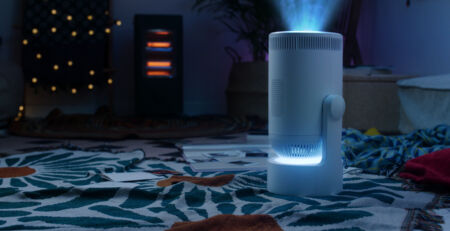
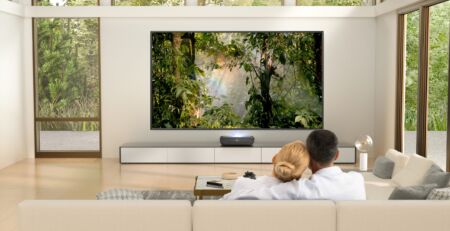
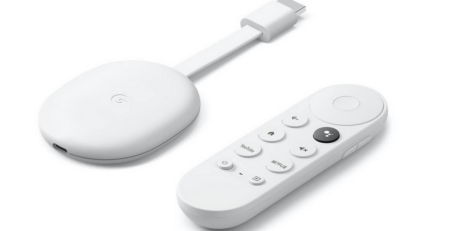

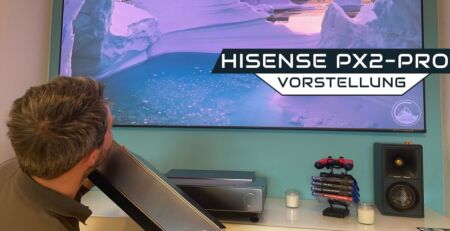
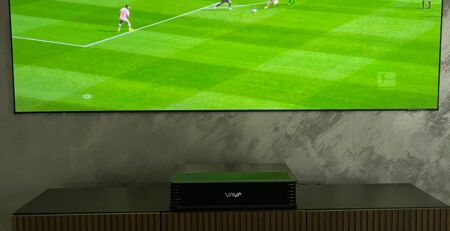


Post a Comment